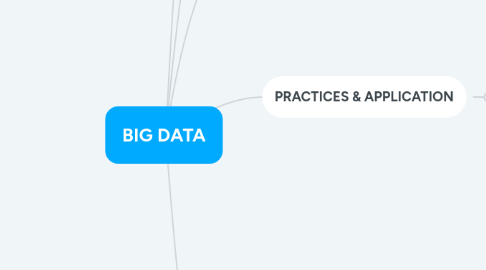
1. Definition
1.1. The term “Big Data” refers to the collection of all this data and our ability to use it to our advantage across a wide range of areas, including business.
1.2. Big data refers to the large, diverse sets of information that grow at ever-increasing rates. It encompasses the volume of information, the velocity or speed at which it is created and collected, and the variety or scope of the data points being covered. Big data often comes from multiple sources and arrives in multiple formats.
1.3. Big data is a set of techniques and technologies that require new forms of integration to uncover large hidden values from large data sets that are diverse, complex, and of a massive scale.
2. Introduction
2.1. The term big data is used to describe the growth and the availability of huge amount of structured and unstructured data.
2.2. Big data which are beyond the ability of commonly used software tools to create, manage, and process data within a suitable time.
2.3. Big data is important because the more data we collect the more accurate result we get and able to optimize business processes. The Big data is very important for business and society purpose.
2.4. The data came from everywhere like sensors that used to gather climate information, available post or share data on the social media sites, video movie audio etc. This collection of data is called BIG DATA.
3. CHARACTERISTICS
3.1. Volume
3.1.1. The amount of data (which, sometimes, can reach almost incomprehensible proportions). With over 90% of today’s data being generated in the past 2 years, that estimates to 2.5 quintillion data bytes daily. Let’s think about volume from a social media standpoint, since social media has a huge impact on data. Since 2016, there are over 2 trillion posts and 250 billion photos uploaded. Facebook has a wealth of personal data and its 2.2 billion users share data every second of the data. This would be impossible if it weren’t for the development of big data.
3.2. Velocity
3.2.1. The speed of data processing - velocity essentially measures how fast the data is coming in. how often new data is created and needs to be stored. Facebook has to handle a tsunami of photographs every day. It has to ingest it all, process it, file it, and somehow, later, be able to retrieve it.
3.3. Variety
3.3.1. Data today comes in all types of formats. Structured, numeric data in traditional databases. Information created from line-of-business applications. Unstructured text documents, email, video, audio, stock ticker data and financial transactions. Managing, merging and governing different varieties of data is something many organizations still grapple with. Each data form has its own type of uniqueness in terms of how it’s classified and stored on a cloud. What makes the format unique is how we can analyze them to create valuable solutions.
4. PRACTICES & APPLICATION
4.1. Banking and Securities Communications, Media and Entertainment Healthcare Providers Education Manufacturing and Natural Resources Government Insurance Retail and Wholesale trade Transportation Energy and Utilities
5. BENEFITS: EDUCATIONAL SECTOR
5.1. Improve Student Result
5.1.1. The overall idea of leveraging big data within the educational system is to improve the student results. Currently, the only measurement of the performance of students is the answers to assignments and exams. However, during his or her life, each student generates a unique data trail. Analyzing this data trail in real-time will help gain a better understanding of the individual behavior of students, and in creating an optimal learning environment for the students. With big data in the education sector, it is possible to monitor student actions, such as how long they take to answer a question, which sources they use for exam preparation, which questions do they skip, etc.
5.2. Customize Programs
5.2.1. With the help of big data, customized programs for each individual student can be created. Even if colleges and universities have thousands of students, customized programs can be created for each of these students. This is possible with the help of what is called as ‘blended learning’ – a combination of online and offline learning. This gives students the opportunity to follow classes that they are interested in and also work at their own pace, while still having the possibility for offline guidance by professors.
5.3. Reduce Dropouts
5.3.1. As big data in the education sector would help improve student results, dropout rates at schools and colleges would also reduce. Educational institutions can use predictive analytics on all the data that is collected to give them insights on future student outcomes. Such predictions can also help run scenario analysis on a course program before it is introduced into the curriculum. In fact, big data can also be used to monitor how students are performing in the job market after graduating from college. This would also help the future students in choosing the right college and course.
5.4. Targeted International Recruiting
5.4.1. With big data in the education sector, institutions can more accurately predict applicants and also analyze the possible factors that affect the application process. Such knowledge will allow institutions to adjust their recruitment strategies and allocate funds accordingly. Such an influx of data will also help students analyze information about schools around the world, speeding up the search and application process for international students too.
